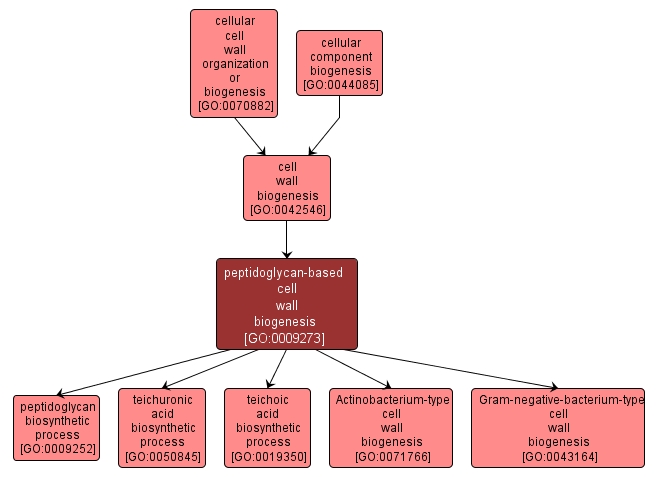GO TERM SUMMARY
|
| Name: |
peptidoglycan-based cell wall biogenesis |
| Acc: |
GO:0009273 |
| Aspect: |
Biological Process |
| Desc: |
The chemical reactions and pathways resulting in the formation of the peptidoglycan-based cell wall. An example of this process is found in Escherichia coli. |
Synonyms:
- cell wall anabolism
- cell wall assembly
- cell envelope biosynthetic process
- cell wall biosynthetic process
- cell envelope biosynthesis
- cell wall synthesis
- cell wall formation
|














